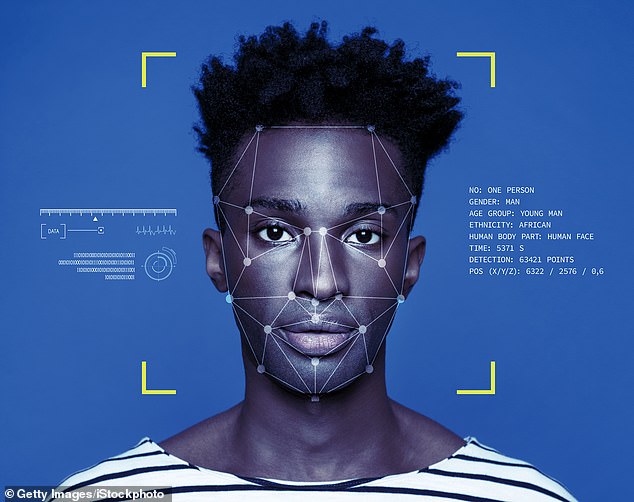Louisiana authorities' use of facial recognition technology led to the mistaken arrest of a Georgia man on a fugitive warrant, an attorney said in a case that renews attention to racial disparities in the use of the digital tool.
Randall Reid, 28, was jailed on November 25 in DeKalb County, Georgia, after authorities misidentified him as a purse theft in Jefferson Parish and Baton Rouge.
'They told me I had a warrant out of Jefferson Parish. I said, "What is Jefferson Parish?"' Reid said. 'I have never been to Louisiana a day in my life. Then they told me it was for theft. So not only have I not been to Louisiana, I also don't steal.'
He was released on December 1 when authorities recognized their mistake.
Reid is black, and his arrest brings new attention to the use of a technology critics say results in a higher rate of misidentification of people of color than of white people, The Times-Picayune/The New Orleans Advocate reported.
Critics warn that facial recognition technology can result in higher misidentification of people of color. Pictured: a random man
Tommy Calogero, Reid's attorney, said he was falsely linked to the June theft of luxury purses from a consignment shop in Metairie, a New Orleans suburb in Jefferson Parish.
The thieves had stole $10,000 worth of luxury Chanel and Louis Vuitton purses over a three-day span.
A Baton Rouge Police Department detective then adopted the Jefferson Parish Sheriff's Office's identification of Reid to secure an arrest warrant alleging he was among three men involved in another luxury purse theft the same week, court records show, according to the newspaper.
Differences, such as a mole on Reid's face, prompted the Jefferson sheriff to rescind the warrant, said Calogero, who estimated a 40-pound difference between Reid and the purse thief in surveillance footage.
'I think they realized they went out on a limb making an arrest based on a face,' Calogero told NOLA.
The police department use of face recognition in Reid's arrest is unclear.

Tommy Calogero, Reid's attorney, said he was falsely linked to the June theft of luxury purses from a consignment shop in Metairie
Reid's case brings renewed attention to the use of facial recognition tools in Louisiana and elsewhere.
In July, New Orleans City Council voted to allow police to use facial recognition after several people complained about privacy issues, NOLA reported.
Police can use facial recognition to identify suspects of violent crimes after all other tactics failed.
Authorities in New Orleans say facial recognition can be used only to generate leads and that officers must get approval from department officials before lodging a request through the Louisiana State Analytic and Fusion Exchange in Baton Rouge.
Under the latest city rules, all possible matches must undergo a peer review by other facial recognition investigators.
Legislation to restrict the use of facial recognition statewide died in a 2021 legislative session.








Gloss